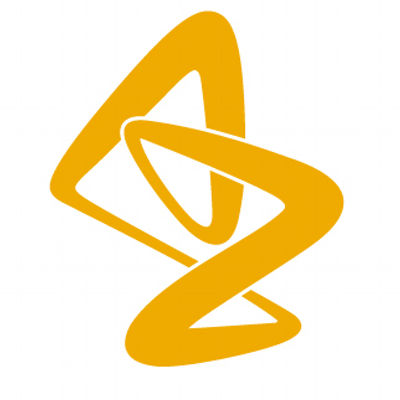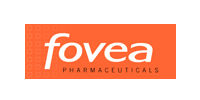预约演示
更新于:2025-05-07
PPIB
更新于:2025-05-07
基本信息
别名 B、Cyclophilin B、CYP-S1 + [10] |
简介 PPIase that catalyzes the cis-trans isomerization of proline imidic peptide bonds in oligopeptides and may therefore assist protein folding. |
关联
8
项与 PPIB 相关的药物作用机制 CaN抑制剂 [+4] |
在研适应症 |
非在研适应症- |
最高研发阶段临床2期 |
首次获批国家/地区- |
首次获批日期1800-01-20 |
靶点 |
作用机制 PPIB抑制剂 |
在研机构 |
原研机构 |
在研适应症- |
非在研适应症- |
最高研发阶段临床前 |
首次获批国家/地区- |
首次获批日期1800-01-20 |
作用机制 CaN抑制剂 [+3] |
在研机构- |
在研适应症- |
非在研适应症 |
最高研发阶段终止 |
首次获批国家/地区- |
首次获批日期1800-01-20 |
2
项与 PPIB 相关的临床试验NCT00983060
A Randomized, Adaptive-design, Dose-finding Study to Assess the Antiviral Efficacy and Safety of NIM811 Administered in Combination With the Standard of Care (SOC) in Relapsed Patients Infected With HCV Genotype-1
This is a study designed to identify a dose of NIM811 that has a good safety profile, is well tolerated when co-administered with SOC, and provides a clinically meaningful effect in viral load reduction compared to SOC alone. This information will be used to support doses selected for future studies.
开始日期2009-09-01 |
NCT00833495
A Multi-Center, Randomized, Double-Masked Evaluation of the Efficacy of Co-Administration of FOV1101-00 (Cyclosporine 0.01% or 0.02%) and Prednisolone Acetate 0.12% (PredMild®) Compared to Prednisolone Acetate 1% Alone or Vehicle Alone in Patients With Mild Ongoing Ocular Allergic Inflammation
This is a phase 2 study that will consist of 3 visits during a 3 week period conducted at up to 5 sites. The purpose of this study is to determine how effective the combination of Pred Mild® and FOV1101-00 is compared to either Pred Forte® alone or to vehicle alone in the prevention of eye allergies. Study subjects will be randomized to one of the following:
FOV1101-00 concentration 1 and Pred Mild®
FOV1101-00 concentration 2 and Pred Mild®
Vehicle of FOV1101-00 and Pred Forte®
Vehicle of FOV1101-00 and Vehicle of FOV1101-00
FOV1101-00 concentration 1 and Pred Mild®
FOV1101-00 concentration 2 and Pred Mild®
Vehicle of FOV1101-00 and Pred Forte®
Vehicle of FOV1101-00 and Vehicle of FOV1101-00
开始日期2009-01-01 |
申办/合作机构 |
100 项与 PPIB 相关的临床结果
登录后查看更多信息
100 项与 PPIB 相关的转化医学
登录后查看更多信息
0 项与 PPIB 相关的专利(医药)
登录后查看更多信息
950
项与 PPIB 相关的文献(医药)2025-04-01·Journal of Dairy Science
Protein signatures of feed restriction and spontaneous lipolysis in ewe's skimmed milk
Article
作者: Viala, Didier ; Cebo, Christelle ; Imbert, Alyssa ; Hurtaud, Catherine ; Delosière, Mylène ; Bonnet, Muriel ; Bernard, Laurence ; Taillandier, Marie ; Larroque, Hélène
2025-03-27·Journal of Medicinal Chemistry
Optimization of Cyclophilin B-Targeted Tri-vector Inhibitors for Novel MASH Treatments
Article
作者: Doughty-Shenton, Dahlia ; Greenslade, Daniel B. ; Papadourakis, Michail ; Robinson, John ; McArthur, Duncan ; Turner, Darryl ; Michel, Julien ; Gillespie, Jonathan ; Wear, Martin A. ; Hulme, Alison N. ; Kouridaki, Maria-Eleni ; Webster, Scott P. ; Bain, Laura ; Maj, Kasia ; Mathie, Tanya ; Cameron, Kate ; Morrison, Angus
2025-02-01·Journal of Magnetic Resonance
1H–19F cross-polarization magic angle spinning dynamic nuclear polarization NMR investigation of advanced pharmaceutical formulations
Article
作者: Purea, Armin ; Šoltésová, Mária ; Krambeck, Stefanie ; Engelke, Frank ; Biscans, Annabelle ; Kay, Emma ; Pinon, Arthur C ; Schantz, Staffan ; Martin, Dave ; Melzi, Roberto ; Schlagnitweit, Judith ; Emsley, Lyndon ; Aussenac, Fabien ; Reiter, Christian
16
项与 PPIB 相关的新闻(医药)2024-11-06
11月5日,中山大学/南华大学研究团队共同在期刊《Advanced Science》上发表了题为“TBL2 Promotes Tumorigenesis via PRMT5/WDR77-Mediated AKT Activation in Breast Cancer”的研究论文,本研究中,研究人员利用实时PCR、蛋白质免疫印迹实验和免疫组织化学对BC患者样本中的TBL2表达进行了分析,还采用Kaplan-Meier生存分析评估其预后意义。研究人员采用蛋白质组学分析、免疫沉淀试验和蛋白质免疫印迹法研究TBL2对AKT磷酸化激活的影响。研究结果显示,BC中存在TBL2的特异性高表达,与多种临床病理特征显著相关,并与患者的不良生存结局相关。通过体内和体外实验观察到,TBL2抑制可抑制BC细胞增殖,而TBL2过表达则有相反的效果。机制上,TBL2被确定为一种支架蛋白,可促进PRMT5和WDR77之间的相互作用。这种相互作用增强了PRMT5的甲基转移酶活性,导致AKT磷酸化激活增加并促进乳腺癌细胞增殖。总之,这项研究揭示了TBL2在PRMT5激活AKT过程中的新功能,并提出TBL2作为治疗BC的潜在治疗靶点。
https://onlinelibrary.wiley.com/doi/full/10.1002/advs.202400160
背景信息
01
乳腺癌仍然是全球重大的健康问题,在许多地区其发病率和死亡率都较高。尽管在治疗开发方面取得了进展,但发现新的生物学标志物和治疗靶点对于推进个性化和有效的乳腺癌管理至关重要。
蛋白激酶B(PKB)是PI3K/AKT/mTOR信号通路中细胞生长和分化的关键调节因子。AKT的异常调节已被证实与包括乳腺癌、卵巢上皮癌、前列腺癌和胃癌在内的多种人类癌症有关。AKT激活通过多个步骤紧密控制,其中PI3K介导的PIP2转化为PIP3是主要机制,随后由PDK1磷酸化Thr308位点,由mTORC2磷酸化Ser473位点。此外,已发现翻译后修饰(PTM),如甲基化和糖基化,可调节AKT激活。最近的研究强调了PRMT5(II型蛋白质赖氨酸甲基转移酶)及WDR77在介导AKT甲基化、磷酸化和激活方面的重要作用,从而促进与肿瘤生长和进展相关的各种过程。
TBL2是WD40重复蛋白家族的成员,参与调节细胞内信号通路,包括TGF、PERK和PI3K-AKT信号通路。新兴的研究表明,TBL2作为驱动基因,增强内质网应激并促进肺腺癌细胞的增殖。异常的TBL2调节与威廉姆斯-比尤伦综合征、血脂异常和膀胱癌等疾病有关,但在BC中的研究仍很有限。此外,TBL2的确切分子功能尚不清楚,因此需要进一步的研究来全面阐明其在BC中的潜在作用,并作为治疗靶点。
高水平的TBL2表达预示着不良的预后
02
研究人员收集并分析了200例侵袭性导管癌患者在中山大学肿瘤防治中心的随访临床数据和病理标本。研究人员进行了TBL2表达的IHC分析,发现94.5%的样本在细胞质中呈阳性,核周有明显的染色。此外,TBL2在BC组织中的表达明显高于相邻的正常组织。TBL2表达水平与临床病理分期的相关性分析显示,高TBL2表达组患者的T分期较晚(P=0.024),肿瘤局部复发率(定义为胸壁或区域淋巴结或远处复发)较高(P<0.001)。Log-rank生存分析表明,低TBL2表达患者的RFS(复发-自由生存期,定义为从手术到首次复发的时间间隔)较长(P=0.003),OS(总生存期,定义为从诊断到任何原因死亡的时间)较长(P=0.023),而高TBL2表达患者则相反。此外,多元比例风险回归模型显示TBL2表达是影响RFS(P=0.041)和OS(P=0.012)的独立影响因素。根据Kaplan-Meier Plotter在线数据库,所有TBL2表达较高的BC患者的RFS和OS都较短。这些结果表明TBL2可能加速BC的恶性进展。
高水平的TBL2表达预示着不良的预后
TBL2促进乳腺癌细胞增殖
03
研究人员研究了TBL2在乳腺癌进展中的作用。研究人员用两种人类乳腺癌细胞系MCF-7和MDA-MB-231进行了遗传改造,以过表达或沉默TBL2。在乳腺癌细胞中过表达TBL2增加了细胞增殖、克隆形成、脱离培养基的生长和细胞周期转换,而TBL2缺失则产生了相反的效果。此外,为了进一步研究TBL2敲低对细胞生长的影响,研究人员对MDA-MB-231细胞进行了梯度转染TBL2siRNA并使用CCK8法进行检测。研究人员观察到,转染100nM siRNA的细胞表现出较弱的生长能力,与仅转染30nM的细胞相比具有统计学差异。在小鼠来源的乳腺癌细胞系4T1中也观察到了类似的结果,这表明TBL2在促进乳腺癌进展中发挥着保守的作用。然而,TBL2并不显著影响乳腺癌细胞的侵袭和转移。
在体内研究中,研究人员使用原位小鼠乳腺癌模型进一步验证了TBL2对细胞增殖的促癌作用。TBL2过表达组的肿瘤生长显著加快,而TBL2沉默组的肿瘤生长受到抑制。为了确认TBL2对增殖的影响,研究人员使用4T1细胞建立了乳腺癌原位小鼠模型。研究人员将表达TBL2的荧光素酶表达的4T1细胞(2×105)经乳腺脂肪垫原位注射。生物发光成像(Bioluminescence imaging)显示,TBL2过表达组的肿瘤负荷较高,而TBL2沉默组的肿瘤负荷较低。此外,TBL2过表达组肿瘤中Ki-67的高表达表明细胞增殖增加。这些结果表明TBL2在促进乳腺癌进展中发挥着关键作用。
结论
04
综上,本研究发现TBL2通过增加PRMT5甲基转移酶活性来促进BC细胞增殖。这反过来又增强了AKT的磷酸化并激活下游级联信号通路。本研究结果和结论有助于更好地理解BC细胞增殖的紊乱,并为开发靶向这一疾病的新型干预措施提供了潜在的靶点。(转化医学网360zhyx.com)
【参考资料】
https://onlinelibrary.wiley.com/doi/full/10.1002/advs.202400160
【关于投稿】
转化医学网(360zhyx.com)是转化医学核心门户,旨在推动基础研究、临床诊疗和产业的发展,核心内容涵盖组学、检验、免疫、肿瘤、心血管、糖尿病等。如您有最新的研究内容发表,欢迎联系我们进行免费报道(公众号菜单栏-在线客服联系),我们的理念:内容创造价值,转化铸就未来!
转化医学网(360zhyx.com)发布的文章旨在介绍前沿医学研究进展,不能作为治疗方案使用;如需获得健康指导,请至正规医院就诊。
免疫疗法临床结果临床1期
2024-04-23
Hepion has “begun wind-down activities” for the programme as it assesses alternative strategies. Image credit: Shuttestock/Pasuwan.
Hepion Pharmaceuticals
has called it quits on a Phase IIb trial investigating the biotech’s lead drug candidate for the treatment of non-alcoholic steatohepatitis (NASH).
The US company, which uses artificial intelligence and deep machine learning to develop drugs, cited resource constraints as the reason for shelving the trial called ASCEND-NASH. Hepion stated that it has already “begun wind-down activities”.
The study was investigating rencofilstat – an oral small molecule that inhibits Cyclophilin B, an important regulator of collagen production. Hepion states that blocking the action of this protein can reduce collagen secretions and fibrotic scarring.
The future of Hepion’s NASH programme was already up in the air following a restructuring plan announced in December 2023. The company announced it was pursuing a new strategy that cut operating costs by 60%. At the time, ASCEND-NASH’s enrolment was already paused, with its viability under evaluation.
A total of 151 subjects were enrolled in the trial against a target of 336. From that cohort, 80 subjects completed the year-on visit.
See Also:
Sanofi gears up for approval of its BTK inhibitor, meets Phase III endpoint
Hepion’s executive chairman John Brancaccio said: “Given the number of enrolled NASH patients to date and the low probability of generating relevant efficacy data to support a registrational trial with our current cash resources, we have opted to wind down the programme and assure that patients are transitioned out of the trial in a safe and compliant manner.”
After pulling the plug on its ASCEND-NASH programme, Hepion said it will continue to explore strategic alternatives.
NASH, also known as metabolic dysfunction-associated steatohepatitis (MASH), is a condition where fat builds up in the liver. This can potentially cause liver damage or cirrhosis.
The
first NASH treatment was approved
by the US Food and Drug Administration (FDA) last month.
Madrigal Pharmaceuticals
’ Rezdiffra (resmetirom) gained the agency nod
after a race
that involved several big pharma players.
According to GlobalData’s patient-based forecast, Rezdiffra is expected to generate $1bn in global sales in 2027.
GlobalData is the parent company of
Clinical Trials Arena
.
临床2期上市批准
2024-04-22
·药研发
「 本文共:15条资讯,阅读时长约:3分钟 」今日头条开拓雄秃新药Ⅱ期临床积极。开拓药业新型靶向雄激素受体(AR)的蛋白降解嵌合体(PROTAC)新药GT20029用于治疗男性雄激素性脱发的中国Ⅱ期临床达到了主要终点。与安慰剂相比,GT20029(0.5% QD,1.0% BIW)治疗患者12周后,目标区域内非毳毛数(TAHC)较基线的平均变化达到统计学显著性(16.80根/㎡vs6.69根/㎡,11.94根/㎡vs7.36根/㎡);GT20029耐受性良好。开拓药业计划尽快开展Ⅲ期临床及美国Ⅱ期临床。国内药讯1.诗健乳腺癌ADC获批Ⅲ期临床。上海诗健生物靶向Trop-2的ADC药物ESG401获国家药监局临床许可,即将针对“经内分泌治疗进展或不适合接受内分泌治疗且在转移阶段的已既往接受过至少一线系统性化疗的HR+/HER2-转移性乳腺癌”适应症开展Ⅲ期临床试验。在早期临床中,ESG401在三阴性乳腺癌(TNBC)患者中ORR为36.3%,DCR为63.6%;在HR+/HER2-乳腺癌患者中的ORR为61.5%,DCR为76.9%。2.恒瑞艾司氯胺酮抑郁研究见刊BMJ。恒瑞医药宣布其艾司氯胺酮用于预防产后抑郁的研究成果在线发表于《英国医学杂志》。数据显示,与对照组相比,艾司氯胺酮治疗组产妇在产后42天时,抑郁发作的患病率显著降低(6.7%vs25.4%,风险比=0.26);治疗组产妇的爱丁堡抑郁评分和汉密尔顿抑郁评分也更低。患者药物不良反应症状短暂且呈自限性、不需药物干预。3.博锐创合放射性显影剂上Ⅰ期临床。苏州博锐创合宣布其自主研发的用于诊断原发性和转移性脑部肿瘤的正电子发射计算机断层显像(PET)示踪剂[18F]BF3-BPA注射液已在I期临床中完成首例受试者入组,该项试验由复旦大学附属中山医院石洪成主任医师牵头开展。[18F]BF3-BPA是一种新型氨基酸类似物分子,可特异性地聚集在肿瘤组织,具有较高的瘤脑比(T/B),即该药物可使肿瘤病灶与正常脑组织的影像对比明显。4.辉瑞整合素β6 ADC中国获批IND。Seagen公司1类生物药SGN-B6A获CDE临床试验默示许可,拟用于治疗晚期实体瘤。SGN-B6A是一款靶向整合素β6(ITGB6)的抗体偶联药物(ADC),在海外已处于Ⅲ期临床阶段,正在评估SGN-B6A与多西他赛化疗相比治疗复发性非小细胞肺癌的效果。去年3月,辉瑞已以总价值约430亿美元收购Seagen公司并将其纳入旗下公司。5.百济神州FIC双抗报IND。百济神州1类生物制品注射用BGB-B2033的临床试验申请获CDE受理。这是百济神州申报的第2款双抗药物,靶点推测为Claudin6/CD3或MUC1/CD16a。MUC1/CD16a双抗差异化在于更高的CD16a亲和力,CD16a与MUC1臂空间距离近,差异化设计强化了NK细胞效应和肿瘤细胞杀伤作用;Claudin6/CD3双抗则旨在通过低抗原依赖性和旁观者效应的设计克服抗原异质性。国际药讯1.FDA将接受MRD指标作为加速批准的新替代终点。FDA肿瘤药物咨询委员会(ODAC)一致投票(12:0)支持使用微小残留病(MRD)作为新的替代终点,用以支持多发性骨髓瘤药品的加速批准。两项荟萃分析显示,MRD与患者的PFS和OS之间存在很强的个体相关性。MRD通过检视患者骨髓样本残留的癌细胞数量来评估患者的肿瘤负荷,可能可以为药物疗效提供良好的中间指标。2.K药辅助治疗肾癌Ⅲ期研究见刊NEJM。默沙东PD-1疗法Keytruda(pembrolizumab)用于术后中、高级别复发风险的肾细胞癌(RCC)患者辅助治疗的Ⅲ期KEYNOTE-564研究成果已发表于《新英格兰医学杂志》上。中位随访为57.2个月时,Keytruda辅助治疗显著改善了患者的无病生存期(DFS),使疾病复发或死亡风险降低28%;同时,改善了患者的总生存期(HR=0.62,P=0.005),更提高了患者两年期总生存率(91.2%vs86.0%)。临床中没有患者因Keytruda的治疗导致死亡。3.GSK启动新冠疫苗联合RSV疫苗Ⅲ期临床。葛兰素史克RSV重组蛋白疫苗RSVPreF3 0A在Clinicaltrials.gov网站上注册一项Ⅲ期临床试验,拟评估RSVPreF3 0A与新冠mRNA疫苗(奥密克戎XBB.1.5)联合接种时的免疫原性、安全性和反应原性,并与50岁及以上成年人单独接种疫苗进行比较。该项研究预计于2025年5月完成。目前,辉瑞/BioNTech、Modenra、赛诺菲也正在积极开发新冠、RSV、流感的二联或者三联疫苗。4.Silence公司降血脂疗法早期研究见刊JAMA。Silence公司RNAi疗法zerlasiran用于脂蛋白(a)-Lp(a)水平≥150 nmol/L的健康受试者和稳定动脉粥样硬化心血管疾病(ASCVD)患者的Ⅰ期临床研究成果已发表于《美国医学会杂志》。Zerlasiran旨在通过靶向降解LPA基因转录的mRNA来降低Lp(a)的产生。数据显示,Zerlasiran(300mg、600mg)单次给药365天时,受试者Lp(a)浓度较基线下降30%和29%;zerlasiran耐受性良好,常见的不良反应为头痛(33%)。5.Metsera公司融资开发减肥新药。Metsera公司宣布完成2.9亿美元融资,以用于推进其主打项目GLP-1R激动剂,以及胰岛淀粉样肽/降钙素双重激动剂(DACRA)和靶向GLP-1/GIP/胰高血糖素的单分子GGG疗法等产品组合的临床进展,应用于减肥、肥胖和代谢相关疾病的治疗。此轮融资由ARCH Venture Partners领投,F-Prime Capital、GV、Mubadala Capital、Newpath Partners、SoftBank Vision Fund 2等投资者参投。6.Hepion公司终止开发II期MASH新药。因为资金有限,Hepion公司宣布将终止亲环蛋白B抑制剂Rencofilstat治疗代谢相关脂肪性肝炎(MASH)的IIb期ASCEND-NASH研究。在II期ALTITUDE-NASH研究中,Rencofilstat治疗患者的疾病严重程度指数(DSI)评分较基线显著降低1.62分(p<0.05)。此前,该新药已获FDA授予用于治疗MASH的快速通道资格,以及治疗肝细胞癌(HCC)的孤儿药资格。医药热点1.AI将帕金森病药物设计提速十倍。英国剑桥大学研究人员使用人工智能(AI)技术大幅加快了帕金森病治疗方法的开发。他们设计并使用了一种基于AI的策略,来识别阻止α-突触核蛋白(帕金森病的特征蛋白)聚集的小分子,将初始筛查过程加快了10倍,成本缩减至千分之一。研究结果发表在新一期《自然·化学生物学》杂志上。2.西班牙医院用“治疗犬”激励病人。西班牙巴塞罗那一所医院和一个提倡用宠物进行辅助治疗的基金会发起一项活动,将“治疗犬”带到重症病房与患者互动,以缓解患者的紧张情绪,激励他们与病魔抗争。据悉,医生将会分析患者在接受“治疗犬”辅助治疗前后的唾液样本,来检查皮质醇等压力指标是否会降低,以及催产素和血清素等与健康相关的指标是否会增加。3.安医大一附院静脉手术中心启用。近日,安徽医科大学第一附属医院静脉手术中心在该院南区正式开诊。安医大一附院静脉手术中心依托血管外科诊疗优势,设置日间静脉手术病房和血管外科手术室,24小时内完成入院、手术、术后观察及出院全过程,通过便捷的“一站式”就医服务方式,为广大患者提供下肢静脉疾病诊断和治疗、下肢静脉曲张微创日间手术、腿部毛细血管扩张美学治疗等优质服务。评审动态 1. CDE新药受理情况(04月21日) 2. FDA新药获批情况(北美04月19日)股市资讯上个交易日 A 股医药板块 -0.06%涨幅前三 跌幅前三万孚生物+15.34% 特一药业-10.01%ST 吉 药+13.55% 哈 三 联 -9.95%同和药业+12.34% 大理药业-9.65%【恒瑞医药]子公司苏州盛迪亚收到国家药监局签发的“注射用卡瑞利珠单抗”临床试验批准通知书。【贵州百灵】公司产品“银丹心脑通软胶囊”获批首家中药二级保护品种,保护期七年。【康希诺】公司产品“冻干b型流感嗜血杆菌结合疫苗”收到国家药监局药物临床试验批准通知书。- The End -戳“阅读原文”,了解更多医药研发及股市资讯。
临床3期抗体药物偶联物临床2期并购临床结果
分析
对领域进行一次全面的分析。
登录
或

生物医药百科问答
全新生物医药AI Agent 覆盖科研全链路,让突破性发现快人一步
立即开始免费试用!
智慧芽新药情报库是智慧芽专为生命科学人士构建的基于AI的创新药情报平台,助您全方位提升您的研发与决策效率。
立即开始数据试用!
智慧芽新药库数据也通过智慧芽数据服务平台,以API或者数据包形式对外开放,助您更加充分利用智慧芽新药情报信息。
生物序列数据库
生物药研发创新
免费使用
化学结构数据库
小分子化药研发创新
免费使用




